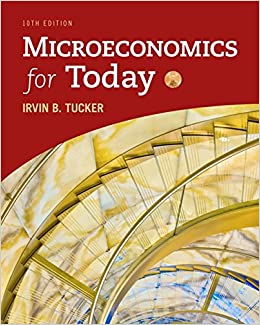Question
Carefully read the quote of Adam Smith on page 28 of Chapter 1 of the textbook. What exactly did Smith imply with his metaphor of
Carefully read the quote of Adam Smith on page 28 of Chapter 1 of the textbook. What exactly did Smith imply with his metaphor of "the invisible hand." Is this a good metaphor for an economic system? Why or why not?
Refer to the reading below for help-
Macroeconomics often proceed from the assumption that an economic system is characterized by a complete set of competitive markets through which all the interactions between people, produ-cers, governments, banks, and foreigners take place. Once that assumption is accepted, ma-croeconomists can logically conclude that shortages or surpluses will never occur because prices always adjust to equate supply and demand. This, apparently, also applies to the labor market, where wages can then be assumed to adjust to keep everyone who wants to work at the market wage fully employed. This type of thinking led most macroeconomists to ignore the possibility of a major economic decline in 1929 and 2007, two years that preceeded major global economic depressions in which many workers could no longer find work and factories operated at half their capacity. These experiences tell us that we need a better understanding of how the sectors of the economic system interact and react to each other. In fact, few of the connections are markets. This idea that the "market" stabilizes the system and keeps it operating close to full employ-ment at all times has become widely accepted as economic truth. Such an automatic market pro-cess that translates individual decisions into socially-optimal outcomes was described as an invi-11 Malcolm I. Thomis (1970). 27 sible hand by Adam Smith (1976[1776], p. 477, Book I) in his famous work, An Inquiry into the Nature and Causes of the Wealth of Nations: 12As every individual...endeavors as much as he can both to employ his capital in the sup-port of domestic industry, and so to direct that industry that its produce may be of the greatest value; every individual necessarily labours to render the annual revenue of soci-ety as great as he can. He generally, indeed, neither intends to promote the public inter-est, nor knows how much he is promoting it....by directing that industry in such a manner
as its produce may be of greatest value, he intends only his own gain, and he is in this, as
in many other cases, led by an invisible hand to promote an end which is no part of his
intention. The accuracy of the metaphor of the invisible hand as a description of any real capitalist market economy, like that of the United States, for example, has never been proven. History and detailed evidence suggests that there is no invisible hand guiding the U.S. economy.
Step by Step Solution
There are 3 Steps involved in it
Step: 1

Get Instant Access to Expert-Tailored Solutions
See step-by-step solutions with expert insights and AI powered tools for academic success
Step: 2

Step: 3

Ace Your Homework with AI
Get the answers you need in no time with our AI-driven, step-by-step assistance
Get Started


